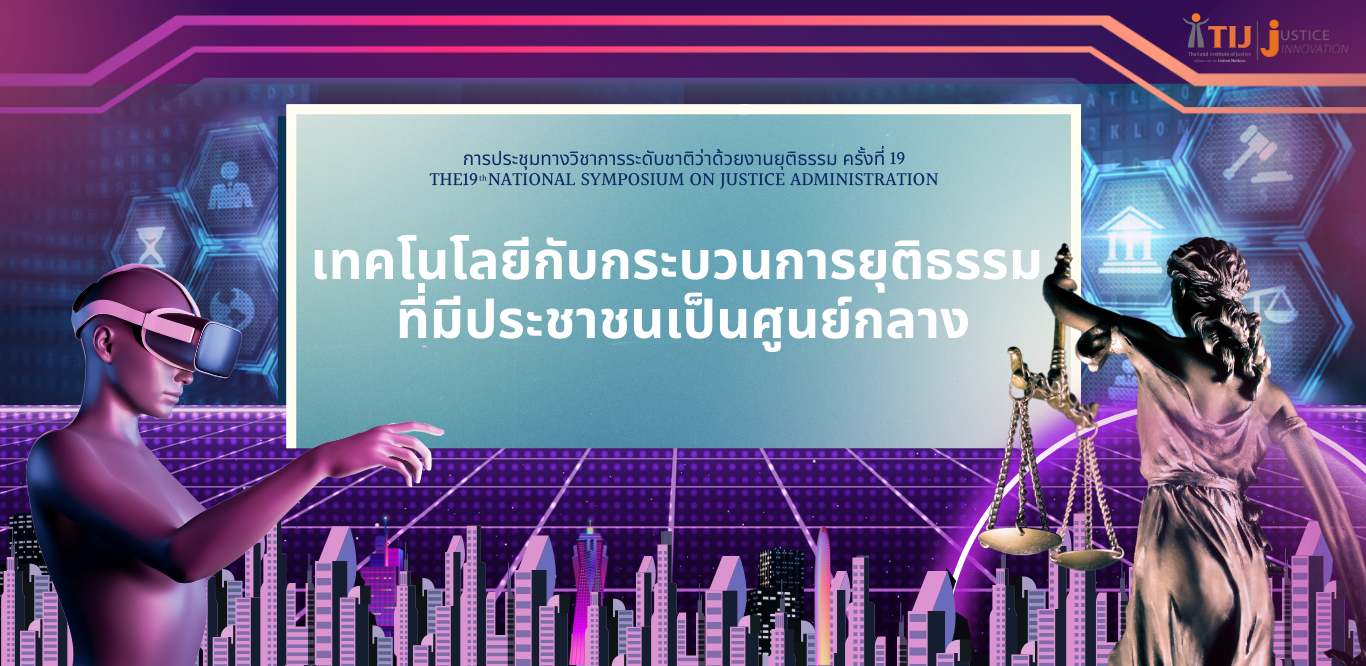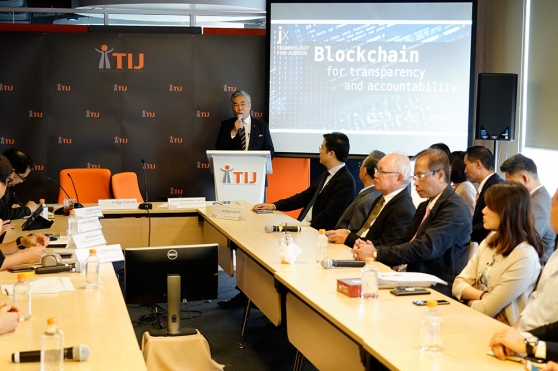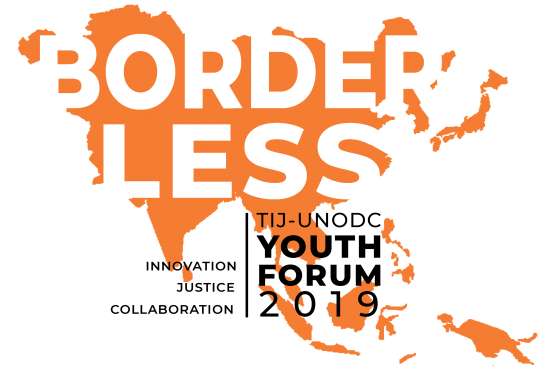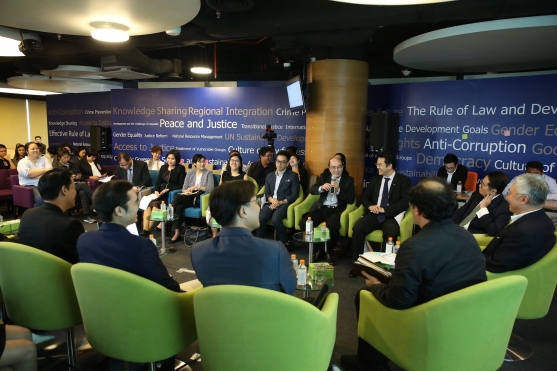Judicial Innovation: Technology for People-Centered Justice
“The future is already here – it's just not evenly distributed.” - William Gibson
This phrase is not far from reality.
Problems relating to justice and judicial process are included in the 2030 Sustainable Development Goals of the United Nations, specifically in Goal 16 which aims to promote just, peaceful and inclusive societies where everyone can access justice and effective, accountable, and comprehensive institutions can be established. This is reinforced more particularly in Target 16.3 which stipulates that the Rule of Law should be promoted so that every individual can gain access to justice.
In 2019, however, it was reported that approximately 1.5 trillion people of the world population cannot equally gain access to justice. With the Covid-19 pandemic as the exacerbating factor, it is estimated that such a number will rise, posing a concern for the personnel in the judicial process. If the judicial process fails to respond to societal or civil expectations and needs, the confidence in the judicial process will be severely undermined in the long run.
Hence, there has been movements initiated by many sectors of the world based on the concept that the judicial process should be inclusively accessible by everyone. The Justice system has to be people-centric and able to timely respond to the needs of the people. That is why the term “People-Centered Justice System” has become a buzzword over the last 2-3 years.
“To take a people-centered approach is to make an effort to understand the needs of the people in relation to justice and to connect them with the entity that can relieve them from their grief, catering to the needs of the people in the receiving end of the judicial process.” - definition of People-Centered Justice System by The Hauge Institute of Innovation of Law (HiiL).
TIJ seriously prioritizes this concept, as confirmed by Dr. Phiset Sa-ardyen, the Executive Director of TIJ, in his presentation on the topic of “Technology for People-Centered Justice”, at the 19th National Symposium on Justice Administration held on the 30th of March 2022. He emphasized that TIJ focuses its endeavors on 3 areas being: (1) reduction of inequality in the judicial process, particularly among the vulnerable group including female and child offenders when they enter the judicial process; (2) reduction of the risk of entering the judicial process for vulnerable people as a result of societal disparity and inequality; and (3) creation of innovation to affect positive changes in the Thai judicial system and cater to the justice-related needs in the Thai society.
Dr. Phiset gave an example on the prison population. If the problem is comprehensively and realistically considered, we can see many surrounding factors that form the multiple elements contributing to the commission of a crime by a person. When the person served the time and was released from the judicial process, he/she may face multi-dimensional risks in the societal reintegration, leading to recidivism and, hence, returning to the judicial process. Therefore, TIJ is attempting to look at the judicial process as a comprehensively interconnected system, so as to design the process and promote the application of innovation as a solution. This led to the establishment of a new agency called “Justice Innovation”. The objective of which is to support and promote research, experiment, and testing of the development of a justice ecosystem that can truly be used in Thailand.
The core value of the Justice Innovation team is to support innovation and promote collaboration for convenient access to justice. While the ideology of Justice Innovation is to uphold the people-centered approach, in practice, however, the questions remain on how justice can be adequately exercised and how to use socially influential technology as a mechanism to properly deliver justice while taking into account the needs and restrictions of its clients.
“We have to admit that technology is a high-potential factor. We cannot establish a policy without considering the use of technology. However, I would like us to understand that technology can be both an opportunity and a risk. If we perceive a problem in a people-centered manner, technology can assist us in seeking and acknowledging the needs of the people, allow us to figure out our new solutions and alternatives, making the judicial process approachable by everyone.” – Dr. Phiset Sa-ardyen, Executive Director of TIJ.
Dr. Anuwan Vongpichet, Deputy Executive Director of TIJ and Acting Director of Justice Innovation, shared with the meeting the application of the people-centered concept as the core value in designing judicial services, based on 3 perspectives:
First perspective: Considering the lifestyles of the people from different walks of life and background. From this perspective, we can see that the nature and severity of any problem and its justice needs can pose different conflicts in life. The tools required to solve such problems, therefore, differ. Some problems cannot be addressed solely through the judicial process. For example, many people might have faced domestic violence in their childhood. When they grew up, they might not have access to education, or they were somehow lost from the system. Since kids would not be able to control the external factors by themselves, they might have gone down the path of theft or drug dealing. Therefore, the solution to the problems of kids in this age group cannot solely rely on the judicial process but the social and public health mechanisms are strongly required.
For the older age group, quarreling with fellow students or neighbors might be a problem easier and more cost-efficient to resolve with an informal or out-of-court justice system, i.e., dispute mediation in school with the community leader or school teacher acting as the impartial mediator. This may be a better option comparing to going to court which consumes both time and money, i.e., lawyer’s fee, transportation, and other hidden costs. However, if the problem escalates to a dispute over land or fatal assault, in this case, the formal judicial process is most preferable as a means of dispute resolution among the disputed parties. Therefore, the first perspective reflects the relationship between the formal and informal judicial process and multiple types of problems people face in their lives.
The second perspective: Prison overcrowding and rate of recidivism. This is the major issue that the government is determined to resolve. If we consider the situation, we can see that more than one-third of the released convicts had returned to prison. From this, we can derive 2 characteristics that form an important hypothesis: people have different needs, conditions, and challenges in their lives. Therefore, the ability to implement their life skills and experience differs. Consequently, their ability to settle down and start an occupation is different from one person to the next. If we want to enable a person to settle down, we need to seek a mechanism which offers alternatives that respond to the diverse nature of the people. The support provided has to be retainable, at least during the first year after being released from prison where the rate of recidivism is at the highest. This will encourage the released convicts to tackle their day-to-day struggles and prevent them from returning to the life of crime. This mechanism is a mentorship programme which goes beyond relying on their families or communities to look after them.
Dr. Anuwan referred to the borrowed concept of “Project Management Office (PMO)” which had been adopted in a pilot project called “White Space Platform”, implemented among groups of high-risk youths in Pra Nakon Si Ayuddhaya and Rayong provinces. This tool expedites communal collaboration and enables community-based supervision. The PMO will be the intermediary assisting with project management and organization of activities in collaboration with agencies, partners, and partnership networks. PMO is required to manage and retain the risk of each agency at the level that still allows the counterparts to collaborate. At the same time, PMO has to push forward the result-based target which is to ensure that the kids and youths joining the programme gain life skills and perspectives which will enable them to better solve the difficulties and to set their life goals the right way. This is what we call innovation because the approach can be standardized as Standard Operation Procedures in other areas. Therefore, the second perspective reflects that inter-sectoral collaboration is a key factor.
The third perspective: Viewing domestic violence through the actual casework of TIJ. Domestic violence is a special offense unlike any typical physical assault cases because the victim of the crime have to remain within the same household as the offender and cannot escape. Statistically, victims of domestic violence cannot access or maybe nervous about entering a judicial process. This is shown by the number of approximately ten thousand domestic violence victims entering the public health system but only about a hundred or so had reported their cases to the police. Hence, we established an exchange of dialogue between people from multiple disciplines and the victims in order to create a database which will give us insight into the problem. With better understanding, we have developed an innovative channel of complaint and assistance in the form of a chatbot called “MySis” which offers handy information that can help the victims out of critical situations.
However, if we look back, we can see that our efforts are still insufficient as there are other factors surrounding the victims. Therefore, a broader perspective and undertaking are required to solve the issue. When a case is received at the upstream level, the downstream level has to view the case using the survivor-centered approach. The multi-disciplinary team together with the Ministry of Public Health shall create a tool for the early detection of domestic violence. This is to ensure that the personnel of the Ministry of Public Health have available a set of screening questions and a vigilant attitude which can truly assist the victims. Moreover, environmental management shall be undertaken in tandem in order to discourage the use of violence. Also, positive attitude has to be generated in society. People should be aware of their rights, and society shall not turn a blind eye to this type of incident. Therefore, this third perspective is to apply a survivor-centered approach, focusing on the ecosystem of those involved, including the victim, the multi-disciplinary team, the society, and the offender.
Measuring the success of justice innovation which holds “People at the center”
Ms. Kanravee Kittayarak, Project Manager of Justice Innovation, drew the attention of the meeting on the current global dialogue on “People-Centered Justice” which is the approach focusing on 3 main aspects.
The first aspect is how to establish a streamlined and sustainable system. Based on the report of The Organization for Economic Co-operation and Development (OECD), the key takeaway from the crisis of the global public health sector is: a common and clear target must be defined. That is, the target should be set on how to have a people-centered justice so that everyone involved can determine the strategy to accomplish the same target. The two essential terms that are frequently mentioned when talking about people-centered justice are “Accessibility” and “Equity”.
The second aspect is how to measure that the judicial process is responding more to the needs of the public. HiiL (The Hague Institute for Innovation of Law) proposed that Justice Needs Survey shall be conducted involving the indicators on the process, outcome, administrative costs, as well as the emotional costs of the public.
Furthermore, the third aspect is learning from the success of people-centered justice. HiiL had also reflected on the potential game changers of the judicial process, i.e., community justice services, violence protection applications, holistic dispute resolution platforms and systems that allow the public to access fundamental public services, etc.
Hence, “Justice Innovation” created an innovation sandbox for the development of justice innovation covering multiple facets of justice. Justice Innovation will be the intermediary connecting sectors in order to gain a holistic perspective of society. At Justice Innovation, it is believed that an efficient justice system can be achieved as long as there is strong collaboration because justice is for everyone.
Towards the end of the discussion, TIJ had hosted a mini workshop showcasing the future of the judicial process, how to be prepared and prevent an unwelcomed future. In this mini workshop, the “Future Thinking” tool was used to encourage mutual planning, marking the first time where the judicial process landscape was mutually laid down by multiple stakeholders. Opinions were shared and exchanged on Possible Future Scenarios of the Thai judicial process, using the Foresight Tool.






